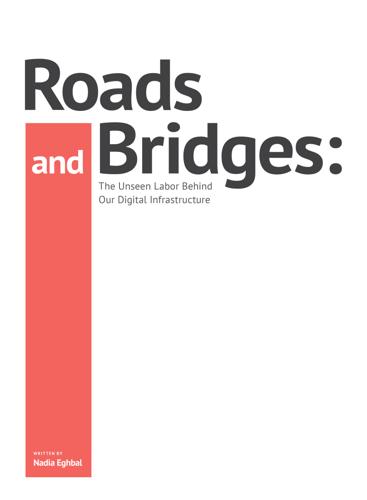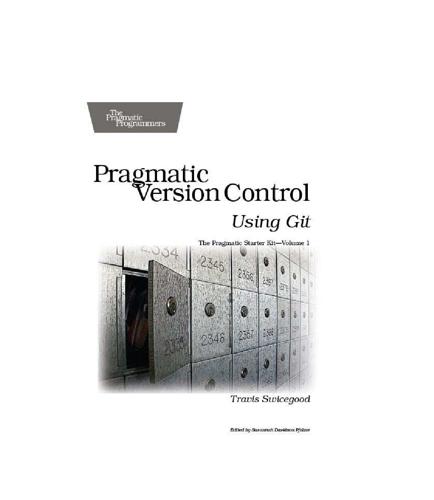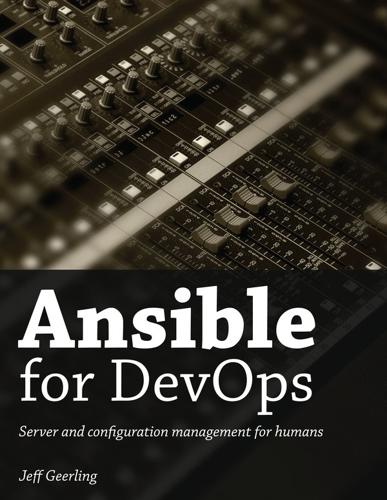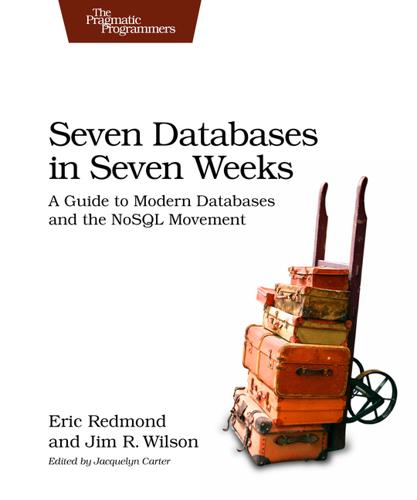AGPL
description: GNU Affero General Public License, free software license for network software
9 results

Producing Open Source Software: How to Run a Successful Free Software Project
by
Karl Fogel
Published 13 Oct 2005
See the section called “The GNU General Public License” in Chapter 9, Legal Matters: Licenses, Copyrights, Trademarks and Patents for details. If users interact with your code primarily over a network—that is, the software is usually part of a hosted service, rather than being distributed as a binary—then consider using the GNU Affero GPL instead. The AGPL is just the GPL with one extra clause establishing network accessibility as a form of distribution for the purposes of the license. See the section called “The GNU Affero GPL: A Version of the GNU GPL for Server-Side Code” in Chapter 9, Legal Matters: Licenses, Copyrights, Trademarks and Patents for more. How to Apply a License to Your Software Once you've chosen a license, you'll need to apply it to the software.
…
The canonical example of a copyleft license is the GNU General Public License (along with its network-oriented variant, the Affero GNU General Public License or AGPL, introduced later in this chapter in the section called “The GNU Affero GPL: A Version of the GNU GPL for Server-Side Code”), and one of the most important considerations in choosing the GPL or AGPL is the extent to which it is compatible with other licenses. For brevity, I'll refer just to the GPL below, but most of this applies to the AGPL as well. Because the primary goal of the GPL's authors is the promotion of free software, they deliberately crafted the license to make it impossible to mix GPLed code into proprietary programs.
…
Not everyone feels the same way, however; most notably, the Linux kernel is famously licensed under the GNU GPL version 2 without the "or any later version" clause, and influential kernel copyright holders, especially Linus Torvalds, have expressed clearly that they do not intend to move its license to version 3.0. This book cannot answer the question of whether you should include the option or not. You now know that you have the choice, at least, and that different people come to different conclusions about it. The GNU Affero GPL: A Version of the GNU GPL for Server-Side Code In 2007, the Free Software Foundation released a variant of the GPL called the GNU Affero GPL[93]. Its purpose is to bring copyleft-style sharing provisions to the increasing amount of code being run as hosted services — that is, software that runs "in the cloud" on remote servers, that users interact with only over the network, and that therefore is never directly distributed to users as executable or source code.

Collaborative Futures
by
Mike Linksvayer
,
Michael Mandiberg
and
Mushon Zer-Aviv
Published 24 Aug 2010
We consider network services that are Free So ware and which share Free Data as a good starting-point for ensuring users’ freedom. Although we have not yet formally defined what might constitute a ‘Free Service’, we do have suggestions that developers, service providers, and users should consider: Developers of network service so ware are encouraged to: Use the GNU Affero GPL, a license designed specifically for network service so ware, to ensure that users of services have the ability to examine the source or implement their own service. Develop freely-licensed alternatives to existing popular but non-Free network services. Develop so ware that can replace centralized services and data storage with distributed so ware and data deployment, giving control back to users.
…
Any such development helps traditional users of free so ware as well as makes doing computing on one’s own computer (which may be a “personal server” or virtual machine that one controls) more a ractive. 112 Perhaps one of the most hopeful trends is relatively widespread deployment by end users of free so ware web applications like WordPress and MediaWiki. StatusNet, free so ware for microblogging, is a empting to replicate this adoption success. StatusNet also includes technical support for a form of decentralization (remote subscription) and a legal requirement for service providers to release modifications as free so ware via the AGPL. This section barely scratches the surface of the technical and social issues raised by the convergence of so much of our computing, in particular computing that facilitates collaboration, to servers controlled by “other people”, especially when these “other people” are a small number of large service corporations.

Roads and Bridges
by
Nadia Eghbal
(It is worth noting that a comparable “shareware” movement was attempted and popularized in the 1980s.) Mike Perham, a maintainer of Sidekiq, a popular Ruby developer tool, also recently suggested that open source contributors use a “dual license” to monetize their work, charging companies for access to a permissive MIT license instead of a more restrictive AGPL license that would require attribution. His theory is that by making AGPL the default license, businesses will pay to avoid it. To support this idea, Perham reminded his audience: Remember: Open Source != Free Software. The source may be viewable on GitHub but that doesn’t mean anyone can use it for any purpose. [131] There’s no reason you can’t make your source code accessible but also charge to use it.

Pragmatic Version Control Using Git
by
Travis Swicegood
Published 1 Dec 2008
The user interface is similar to GitHub, and it offers some similar features, with two exceptions: • There is no hosting of private repositories on Gitorious. • The source code for Gitorious is available under the Affero General Public License, which is similar to the GPL with one addition. You must release the source code from any service that uses the AGPL. http://gitorious.org B.4 Online Resources A ton of information about Git is available online. This section highlights the main stops for information online. git.or.cz The source for all things Git is the main Git website, has links to the latest source code, user documentation, wiki, and many of the projects related to Git. http://git.or.cz Git Manual The user’s manual is the definitive source on how to do everything in Git.

Ansible for DevOps: Server and Configuration Management for Humans
by
Jeff Geerling
Published 9 Oct 2015
Rsync, git, or NFS offer simple initial setup, and low impact on filesystem performance (in many scenarios). But if you need more flexibility and scalability, less network overhead, and greater fault tolerance, you will have to consider something that requires more configuration (e.g. a distributed file system) and/or more hardware (e.g. a SAN). GlusterFS is licensed under the AGPL license, has good documentation, and a fairly active support community (especially in the #gluster IRC channel). But to someone new to distributed file systems, it can be daunting to get set it up the first time. Configuring Gluster - Basic Overview To get Gluster working on a basic two-server setup (so you can have one folder that’s synchronized and replicated across the two servers—allowing one server to go down completely, and the other to still have access to the files), you need to do the following: Install Gluster server and client on each server, and start the server daemon.

Forge Your Future with Open Source
by
VM (Vicky) Brasseur
It’s not about using FOSS on the job, as that holds a different sort of risk profile for your organization. Before integrating a FOSS project in your company’s product, be aware of your company policy as far as compliance, security, and approved licenses. Some companies, for instance, have a blanket ban on using the Affero GNU Public License (AGPL) or other copyleft licenses. Because these FOSS usage policies are highly specific to each company, I do not cover using FOSS for work in this book. Contributing to External FOSS Projects Later on I’ll briefly talk about how to contribute to FOSS projects released by your company, but the majority of this chapter assumes that what you want to do is contribute to projects that are external to your company.

Mastering Structured Data on the Semantic Web: From HTML5 Microdata to Linked Open Data
by
Leslie Sikos
Published 10 Jul 2015
Further features that can be used for comparing graph databases are licensing, source availability (open source, binary distribution, or both), scalability, graph model, schema model, API, proprietary query language and query method, supported platforms, consistency, support for distributed processing, partitioning, extensibility, visualizing tools, storage back end (persistency), language, and backup/restore options. The comparison of the most commonly used graph databases is summarized in Table 6-1. 146 GPL/ Proprietary Proprietary Proprietary Public Domain Proprietary Apache Proprietary Apache Proprietary LGPL Proprietary AGPL/ Proprietary GPL/ Proprietary MySQL Oracle SQL Server SQLite AllegroGraph ArangoDB DEX FlockDB GraphBase Hyper GraphDB InfiniteGraph InfoGrid Neo4j License Java Java x86/ Java Java Java Java x86 x86 x86 x86 x86Win x86 x86 Java Java Java/C++ Java Java Java/ Scala/Ruby C++ C/C++/JS Likely Java C C++ C/C++ C/C++ Platform Language Src/Bin Src/Bin Bin Src Bin Src Bin Src/Bin Bin Src/Bin Bin Bin Bin Free, $6,000–$24,000 Free + Support Free Trial/$5,000 Free Free, $15/mo, $20,000 Free Free Personal/ Commercial $$ Free Free-ish/$$$$ Free $898–$8592 $180–$950 Free Distribution Cost Table 6-1.

Seven Databases in Seven Weeks: A Guide to Modern Databases and the NoSQL Movement
by
Eric Redmond
,
Jim Wilson
and
Jim R. Wilson
Published 7 May 2012
%d`.db But keep in mind incremental works only on a fully backed-up directory, so ensure the previous command is run on the same day. Day 3 Wrap-Up Today we spent some time keeping Neo4j data stable via ACID-compliant transactions, high availability, and backup tools. It’s important to note that all of the tools we used today require the Neo4j Enterprise edition, and so use a dual license—GPL/AGPL. If you want to keep your server closed source, you should look into switching to the Community edition or getting an OEM from Neo Technology (the company behind Neo4j). Contact the Neo4j team for more information. Day 3 Homework Find Find the Neo4j licensing guide. Answer the question, “What is the maximum number of nodes supported?”

ZeroMQ
by
Pieter Hintjens
Published 12 Mar 2013
I think this fight between individual expertise and collective intelligence plays out in other areas. It defined Wikipedia, and still does, a decade after that work surpassed anything built by small groups of experts. For me, we make software by synthesizing knowledge, much as we make Wikipedia articles. Licensing and Ownership The project SHALL use the GPLv3 or a variant thereof (LGPL, AGPL). I’ve already explained how full remixability creates better scale and why the GPL and its variants seem the optimal contract for remixable software. If you’re a large business aiming to dump code on the market, you won’t want C4, but then you won’t really care about community either. All contributions to the project source code (“patches”) SHALL use the same license as the project.